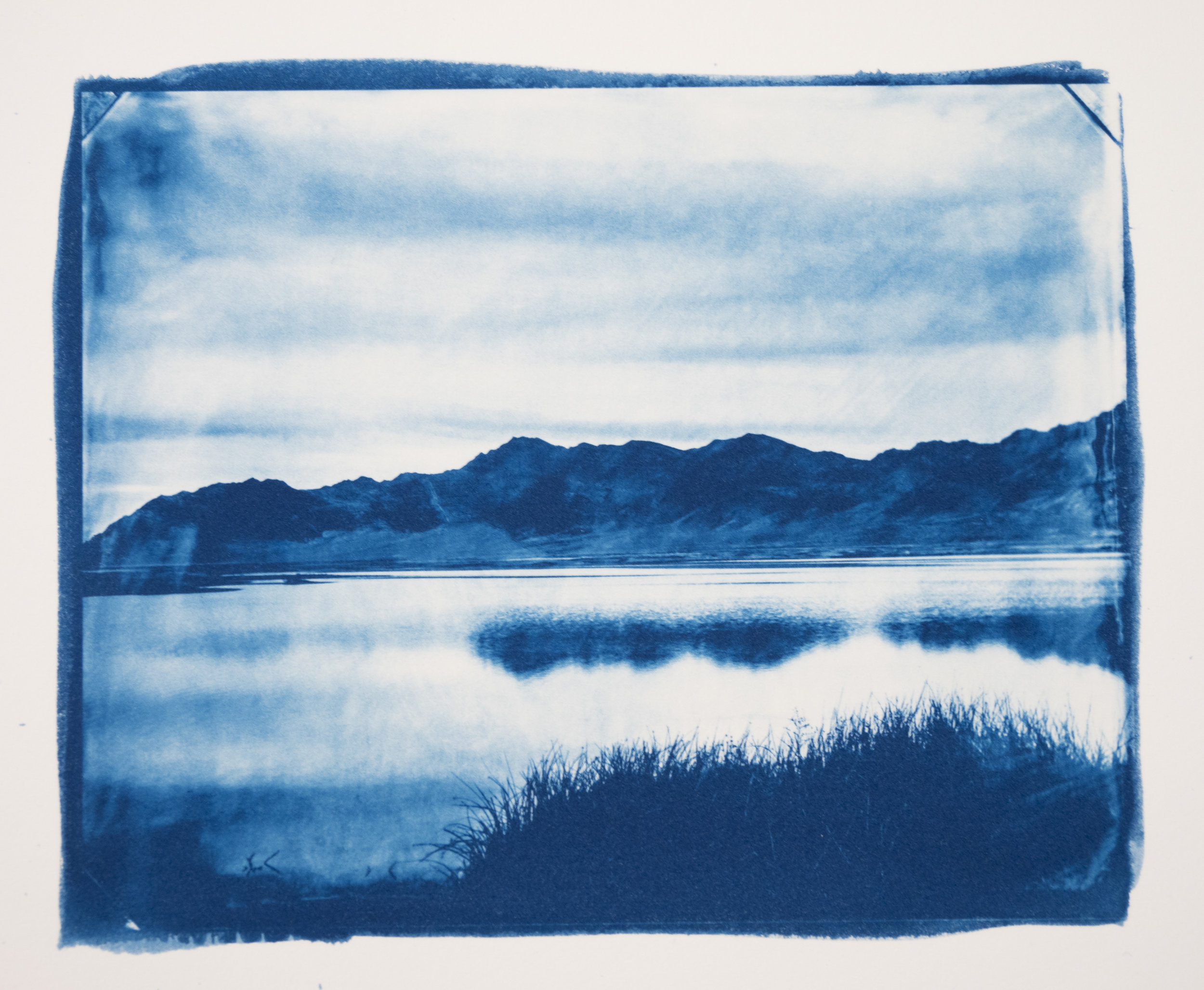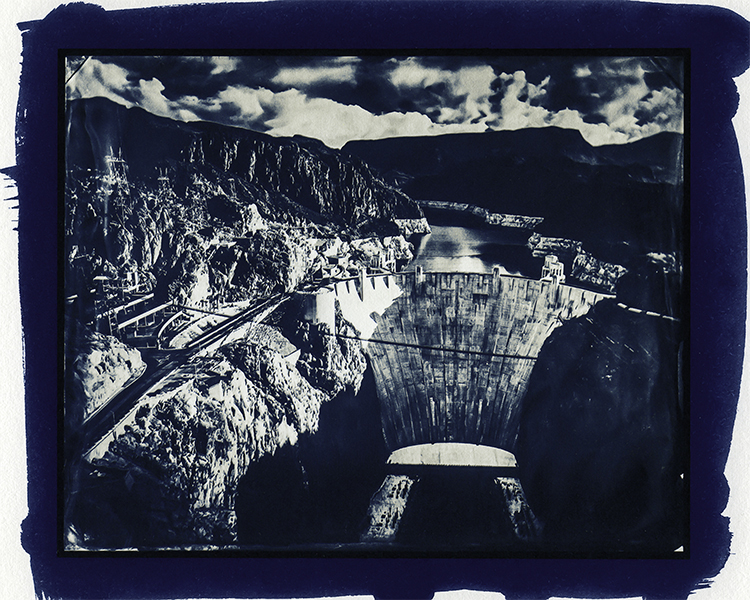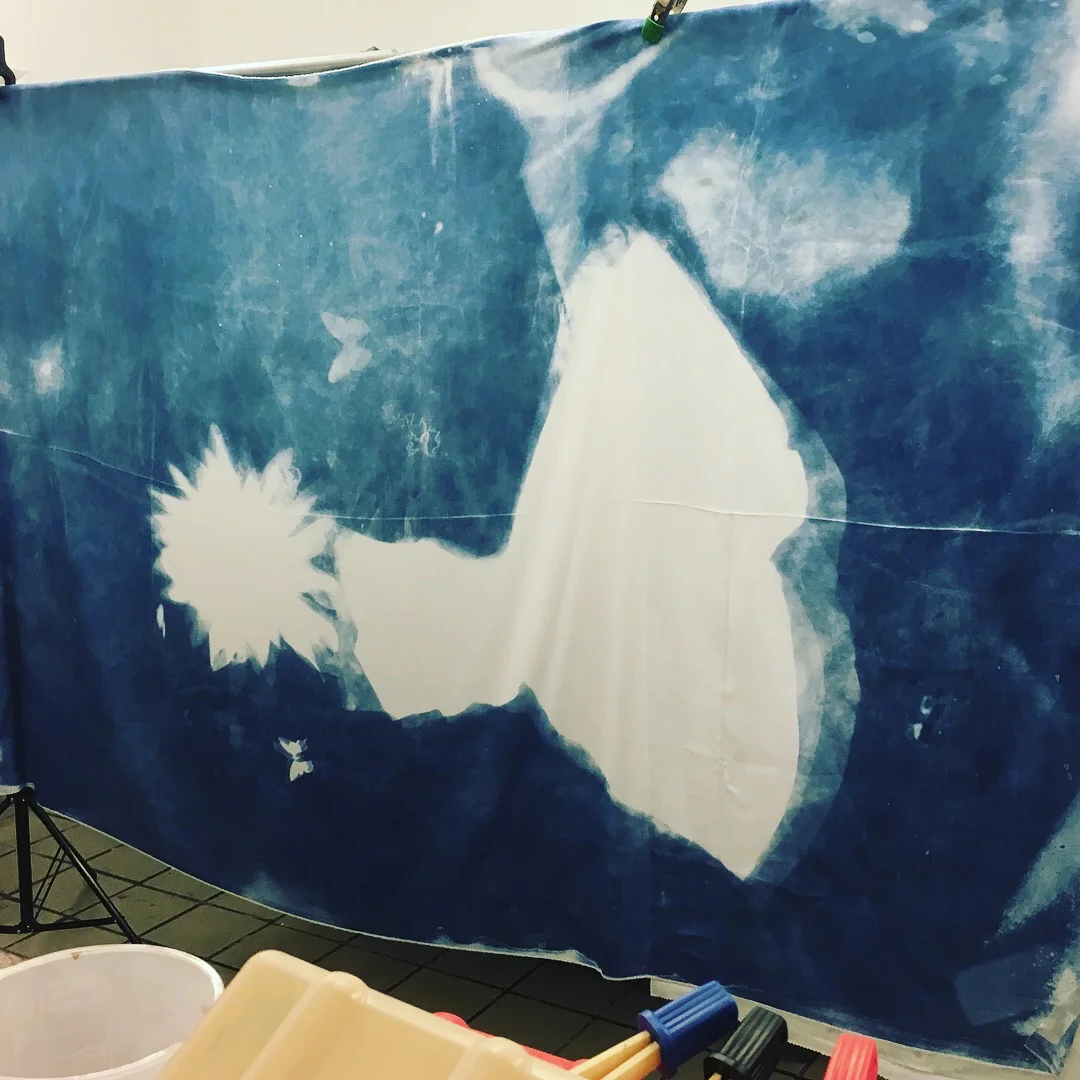Cyanotype
Invented by John Frederick William Herschel in 1842, cyanotypes have a deep blue hue. Famously, the first photographic book was created by Anna Atkins in the 1840s to create photograms of algae in cyanotype. It is a more affordable photographic print because it does not use metals like silver, platinum, or palladium. Commercial cyanotype paper became available in 1872 and was used in the building industry for drafting site plans (i.e. blue prints) until the 1950s. In the 1960s alternative processes, including cyanotype, were revived and brought back into the photographic tool box.*
Cyanotypes are the perfect introduction to alternative processes. Affordable, unique, and easy to apply to a multitude of substrates, try your hand at making your own in one of our workshops.
Cyanotype Workshops
*For more information on the history of cyanotype and the print itself read The Atlas of Analytical Signatures of Photographic Processes: Cyanotype by Dusan C. Stulik and Art Kaplan.
Luminaria’s Capabilities
David Hyams, master printer and our co-founder, has spent his career understanding the chemistry behind alternative processes. With cyanotype in particular he has focused on extracting a wide tonal range in an otherwise compressed process, and using cyanotype combined with other alternative processes to create different hues and details. Some of our capabilities include:
Digital negatives
Cyanotype requires contact printing, meaning the negative is not enlarged but printed 1:1 on the paper. With calibrated digital negatives we can take any of your digital images and output the perfect negative for your final print. Print sizes are dependent upon the file size of your digital image.
Wide tonal range
Our calibrated digital negative are designed to elongate the tonal range in process known for being very compressed.
Split process printing
Perhaps you want the tonal range of a platinum palladium print with the rich blue of the cyanotype. Easy.
Glossy finishing
Cyanotypes have a matte surface. We can add a glossy finish with a final coat of gum arabic, enhancing contrast.
Sizes
Our exposure unit allows us to print up to 24x36 inches.
Prices
Our pricing is based on materials costs and your customization requirements. Because of this we can only provide a basic estimate of pricing on our website. Contact us to discuss your needs or schedule an appointment to visit our lab and samples.
8x10 | $80
11x14 | $150
16x20 | $250
inquire for larger sizes
Workshops
Saturday, September 21, 1-4pm
4 students max
$50
Bring a friend and join us for this very fun session making blue prints, also called cyanotypes, on scarves you can wear or give as a gift. Invented in 1843, cyanotype is a chemical photographic process that is only sensitive to UV light and is famous for its blue color. It is perfect for those new to alternative photographic processes as it is one of the most affordable and user-friendly of them all. In this mini-workshop you will use a brush to apply cyanotype to a silk or cotton scarf (your choice) and print photograms (a term for using objects to block light and make an image, essentially using an object as a negative). Participants are encouraged to bring their own objects for photograms.
April 6-7, 2019, 10am-5pm
$100/person
The Utah State Capitol is a neoclassical revival, Corinthian-style building designed by architect Richard K.A. Kletting and built between 1912 and 1916. The interior features incredible architectural details and art while the grounds feature historical markers, Yoshino cherry trees, and an expansive view of Salt Lake City. For this Photo Safari we will spend Day 1 at the capitol exploring the grounds and photographing. On Day 2 we will make digital negatives from our digital images and print them in cyanotype —one of the earliest photographic processes to be invented and famous for its blue color. Digital cameras are required as there will not be enough time to develop film. Cell phone cameras are welcome and work really well on Safari.
Workshops have no minimum of enrollment requirement but the maximum is 6 students. Photo Safaris are non-refundable though we will work with you to reschedule when possible.
May 11-12, 2019
$100/person
Located at 749 East 500 South in Salt Lake City, Gilgal Sculpture Garden was created by Thomas Battersby Child, Jr. in the mid-twentieth century and is comprised of 12 sculptures and 70 stone engravings. For this Photo Safari we will spend half a day on Day 1 (afternoon to early evening) at Gilgal Garden exploring the various imagery and photographing. On Day 2 (10am-3pm) we will make digital negatives from our digital images and print them in cyanotype —one of the earliest photographic processes to be invented and famous for its blue color. Digital cameras are required as there will not be enough time to develop film. Cell phone cameras are welcome and work really well on Safari.
Workshops have no minimum of enrollment requirement but the maximum is 6 students. Photo Safaris are non-refundable though we will work with you to reschedule when possible.
Interested in another type of class? Here are some of our previous offerings. Join our mailing list at the bottom of the page to stay up-to-date on our workshops. Or, schedule and On-Demand Workshop tailored to your needs.













